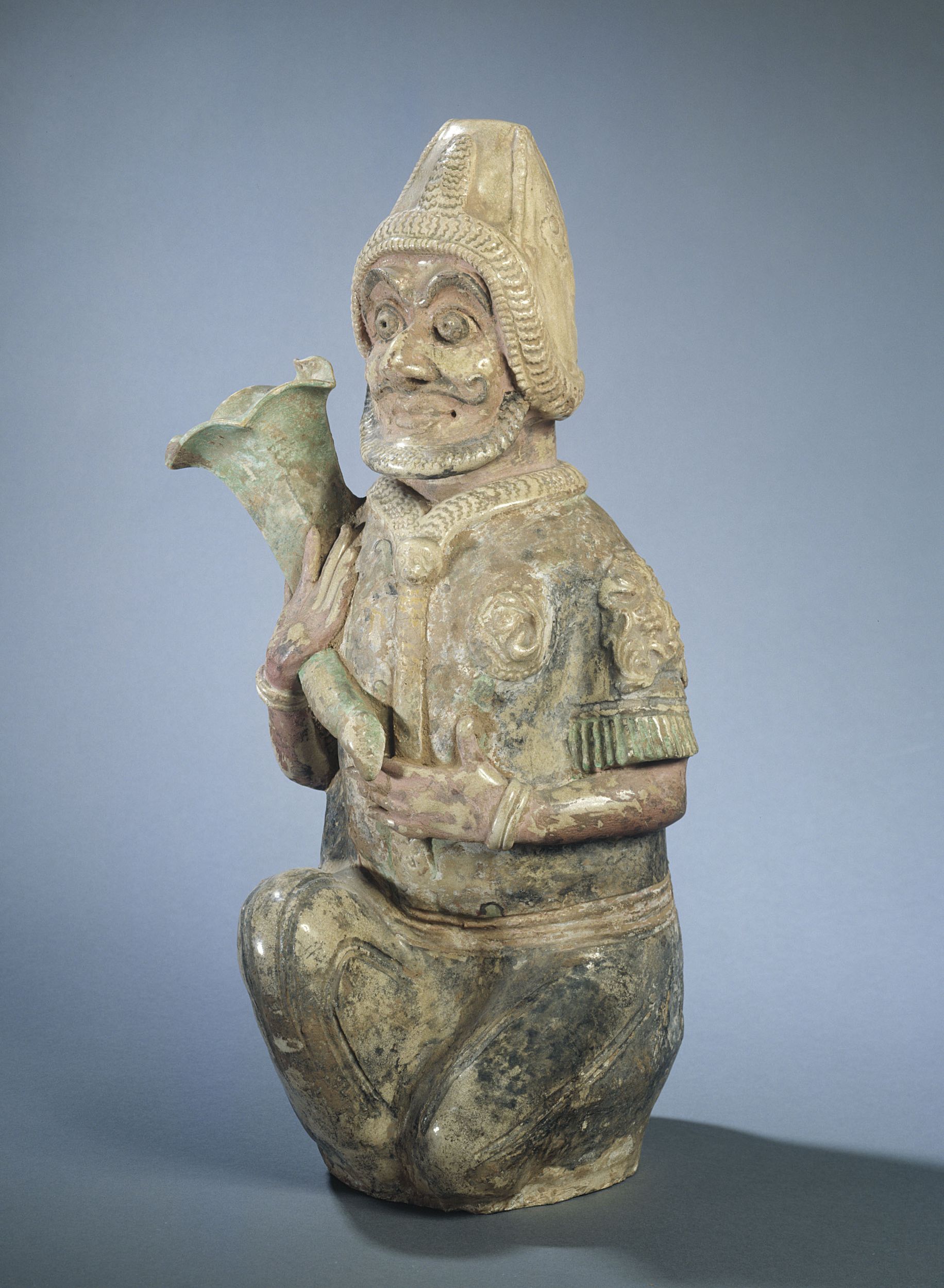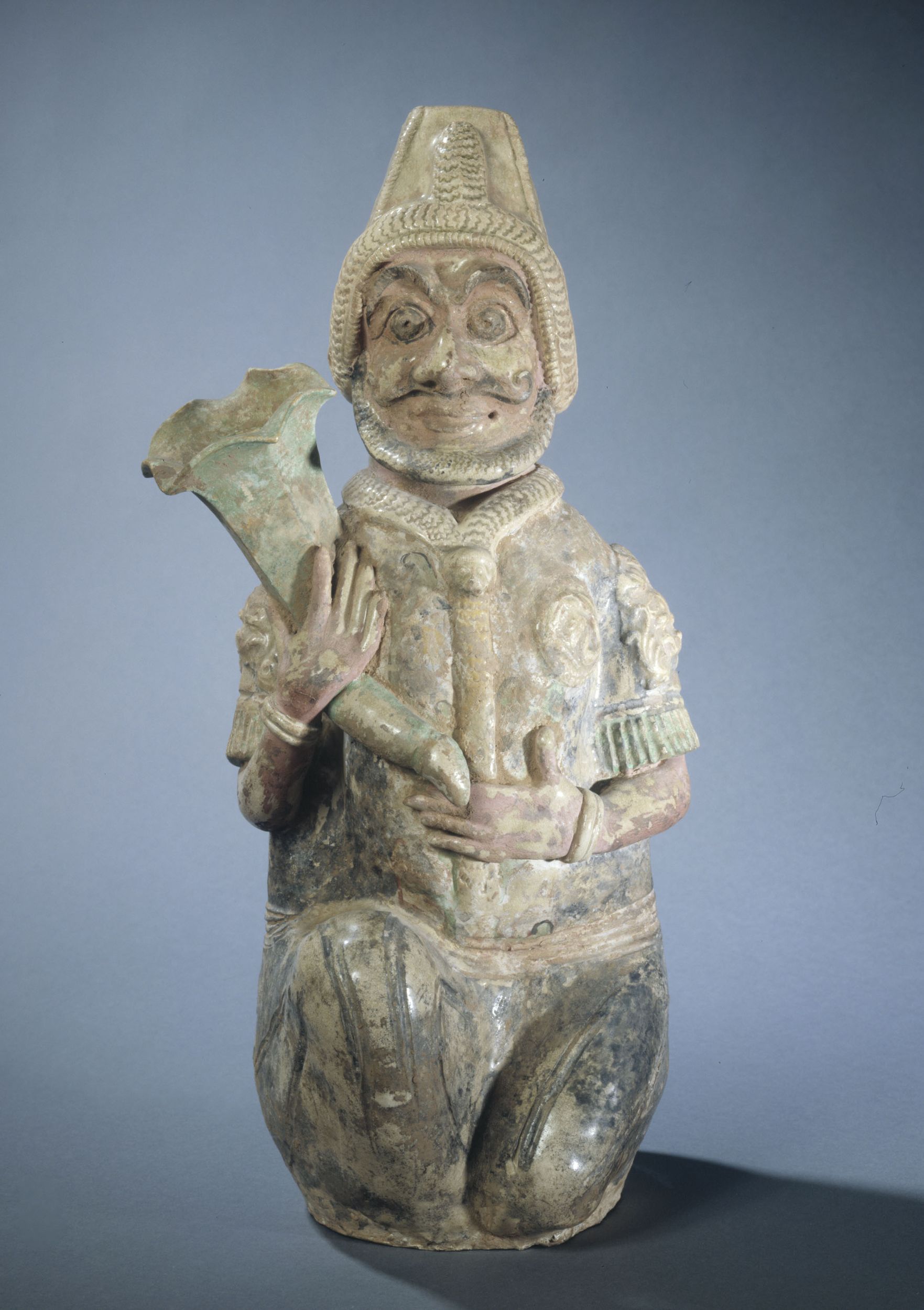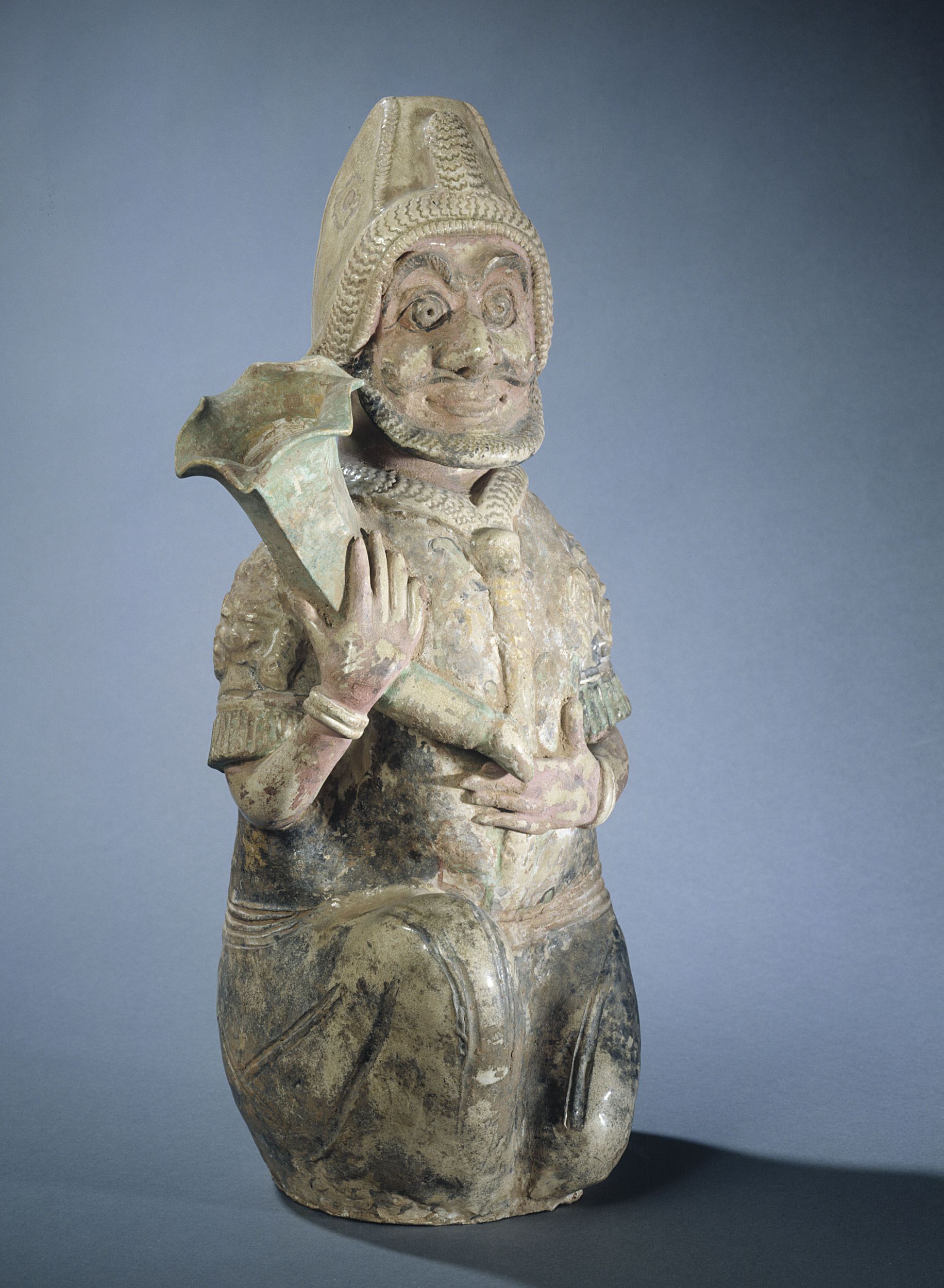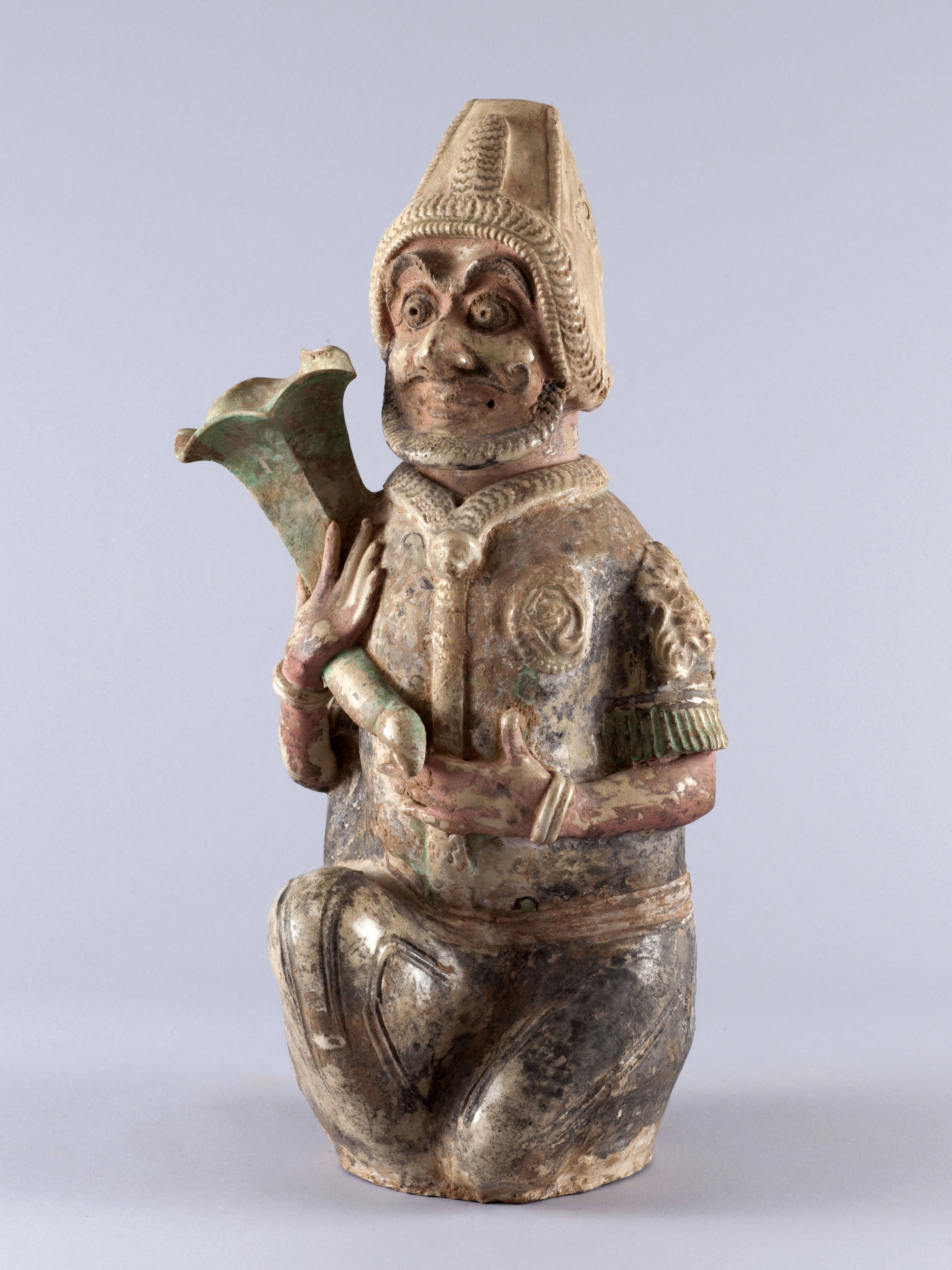
Barbare à la corne
Terre cuite, Moulage, Glaçure plombifère, Couleurs - Pigments
Statuette, Mingqi
Achat
M.C. 8971
The Cernuschi Museum’s Barbarian with a Horn is part of a group of five pieces, along with a head separated from its body, depicting kneeling figures with their left hand on their chest and holding a vessel in their right hand. Their clothing and facial features indicate non-Han ethnic groups.
According to the recent in-depth study of these pieces by Suzanne Valenstein, the bonnet turned up at the edge, prominent nose, bulging eyes and thick beard would appear to be a stereotypical portrayal of the Sogdians, many of whom were wine merchants travelling the overland Silk Roads.
Comparison with a head found in the tomb of Duan Boyang and with glazed and painted mingqi found in Shaanxi, Henan and Liaoning suggests that these six works were produced in kilns in northern China between circa 625 and 675.
Suzanne G. Valenstein, Cosmopolitanism in the Tang dynasty : a Chinese ceramic figure of a Sogdian wine-merchant, Los Angeles : Bridge 21 publications, 2014.


